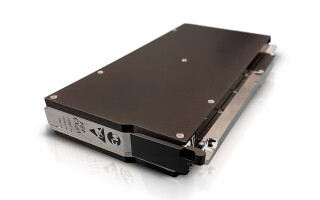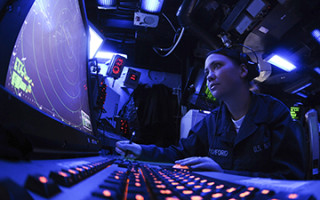Multi-INT and SOSA: A consideration of next steps - Story
October 18, 2022Multiple intelligence (Multi-INT), sometimes referred to as multi modality, is a popular term used in recent years to describe C5ISR [command, control, computers, communications, cyber, intelligence, surveillance, and reconnaissance] applications in which data obtained from disparate sensing sources is fused together to derive new information and operational insights. In some cases, this can mean the fusion of SIGINT [signals intelligence] data and radar data, or SIGINT data with EW [electronic warfare] data and EO/IR [electro-optical/infrared] data. In other cases, it may mean combining real-time data with post-mission analysis from previously processed data. Additionally, there are approaches where artificial intelligence (AI) and machine learning (ML) assist via data and information analysis to identify patterns or predict outcomes.
Rightsizing processor performance for today’s DSP applications - Story
July 22, 2022For rugged DSP [digital signal processing] processor cards, it is important to have a balance between processor performance, memory bandwidth, I/O bandwidth, and ruggedization. Deficiencies in any of these attributes will limit the achievable performance. Due to limited real estate available on 3U OpenVPX boards, designers and users must make tradeoffs on which dimensions to maximize and/or minimize.
Migrating legacy software from obsolete hardware to modern system environments - Story
April 26, 2022Virtualization software and model-based design provide a path that not only enables system designers to maintain legacy software for avionics and other mission-critical systems but also makes it possible to migrate that code to modern higher-performance processing platforms, for example from an older PowerPC-based VME board over to a new x86 or Arm-based VME or OpenVPX module.
Sensor Open Systems Architecture (SOSA) – Taking EW systems to the next level - Story
October 20, 2021The Sensor Open Systems Architecture Technical Standard (SOSA) – which will bring many benefits to designers of radar systems – will also have a beneficial effect on the design of electronic warfare (EW) systems.
Sensor Open Systems Architecture (SOSA): Enabling the next generation of flexible and adaptable radar systems - Story
February 08, 2021In order to keep up with the continued acceleration of new technology and to be able to protect the warfighter from the latest threats, it is essential that we can turn our deployed platforms into adaptable entities that can evolve over time and are not static. The SOSA [Sensor Open Systems Architecture] Technical Standard is the next major step in realizing this goal.
Sensor Open Systems Architecture (SOSA): Enabling the next generation of flexible and adaptable radar systems - Story
January 15, 2021In order to keep up with the continued acceleration of new technology and to be able to protect the warfighter from the latest threats, it is essential that we can turn our deployed platforms into adaptable entities that can evolve over time and are not static. The SOSA [Sensor Open Systems Architecture] Technical Standard is the next major step in realizing this goal.











